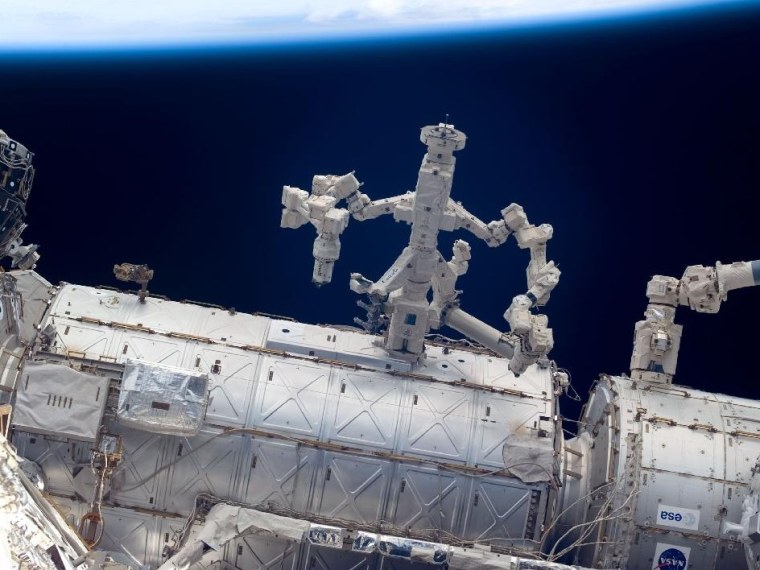Springing off the heels of a successful repair mission to the Hubble Space Telescope, NASA has been quietly working on developing a new specialty: satellite repair-bots.
The goal of the NASA project is to demonstrate to commercial firms the feasibility of refueling, repairing and servicing spacecraft in orbit.
There are more than 360 operational commercial satellites and hundreds of government spacecraft currently in orbit, many of which will run out of fuel long before they sustain electronics or other systems failures.
"It's our idea to stimulate a pathfinder kind of mission," said Frank Cepolina, a Hubble mission development manager now spearheading NASA's new Satellite Servicing Development Office at the Goddard Space Flight Center in Greenbelt, Md. "Once we're done, commercial takes over."
The first of what could be several demonstration missions is expected to fly on the International Space Station sometime next year. The plan is to use Dextre, the station's Canadian-built robot, to demonstrate autonomous orbital refueling.
Outfitted with smart sensors and tools, Dextre would basically pump fuel through tank valves that are identical to equipment flying on hundreds of satellites today. The robot would have to remove insulation, disconnect safety wires and prepare ports as part of the job.
"We want to demonstrate our ability to get up there...and pass fuel into valves and into a receiving tank, and do this test in many configurations, many different times," said Cepolina.
Dextre already has been through the paces. Before it was launched to the space station, the Hubble team used it to test robotic servicing options for fixing the telescope. NASA initially canceled the shuttle servicing mission after the 2003 Columbia accident, believing it was too risky to fly astronauts anywhere but the space station. In the end, NASA reinstated the shuttle's mission to Hubble, which was successfully completed last year.
The robotics work, however, was not in vain. Tools and techniques developed for the robotic servicing of Hubble were adapted for the shuttle mission, boosting productive of the spacewalking service teams. After the flight, NASA began thinking more generically about robotic satellite servicing.
"We're trying to build an industry, not a government program in whatever NASA does and leave something behind," Dave Huntsman, who oversees commercial space initiatives at NASA Headquarters in Washington, D.C., told Discovery News.
"In area after area, we're falling behind. We're fourth in commercial launches now, with less than 10 percent of the market. We used to have 100 percent of the commercial satellite launch market," he said.
"It isn't just a matter of money," Huntsman added. "It's whether the government leverages the money to leave a sustainable industry behind. The U.S. hasn't been doing that. That's why our competitive industries are falling behind."
Cepolina's team would like to get its refueling demonstration gear on the last shuttle flight to the station, currently scheduled for September, but with just four flights remaining, there is a lot of competition. Ground demonstrations of robotic refueling are under way.
